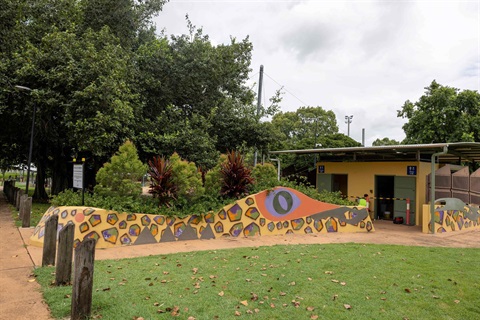Algae embryo development mirrors patterns in animals and plants, revealing the shared crucial stages in the evolution of complex life forms.
Recent observations in brown algae from researchers at the Max Planck Institute for Biology Tübingen and the University of Dundee reveal the same hourglass pattern during embryogenesis as animals and plants. The ‘hourglass model’ of development in multicellular organisms suggests that embryos of the same phylum display differences morphologically and molecularly at the earliest and latest stages but resemble one another at the mid-embryonic period. Tracking developmental stages in brown algae now demonstrates that the processes governing the development of complex multicellular organisms are more universal than we thought, providing a deeper understanding of how multicellular life evolved.

Algal embryos pass through a mid-embryo bottleneck, as seen in animals and plants, characterised by morphological and molecular conservation.
© Jaruwatan Sodai Lotharukpong / Max Planck Institute for Biology Tübingen
It would be easy to distinguish between a chicken, a fish or an elephant. Yet, during their early stages of development, these species share a striking similarity. Although their embryos have distinct origins and develop into species with different characteristics and sizes, at one particular moment in their growth, they pass through a narrow bottleneck in development, where their cells are almost identical. This hourglass model of embryonic evolution theorises that species exhibit significant variability in the early and late stages of development, while a mid-embryonic phase remains remarkably conserved. This model has been observed in animals, plants, and fungi. Until now, its presence in brown algae had not been investigated.
Brown algae represent Earth’s third most developmentally complex lineage, comparable to some plants in terms of sophistication in developmental patterns. They are complex photosynthetic organisms with a different evolutionary history than green plants. For instance, brown algae don’t have true roots, stems, or leaves. Yet, they have evolved analogous complex multicellular structures independently of plants.
Dr Susana Coelho, noted the challenges of algae research in collecting the species: “They are only fertile in winter. We faced storms to gather the adults on Brittany’s rocky shores and breed them in the lab.”
The latest study from biologists at the Max Planck Institute for Biology Tübingen reveals an hourglass pattern in the Fucus brown algae, providing new insights into the evolution of multicellularity. Scientists learn how cells and tissues develop over time by studying the transcriptome-a library of all active genes at a specific time.
“It was amazing to discover a conserved stage in brown algal embryogenesis, where ancient genes are expressed similarly to those in animal and plant embryos. This is the hallmark of the hourglass model, which applies to all complex life forms,” commented first author and doctoral researcher Jaruwatana Sodai Lotharukpong.
The study demonstrates that Fucus embryos show greater variance in early and late developmental stages. At the same time, the mid-embryonic period is crucial for establishing the body plan of the adult organism. This pattern mirrors the developmental processes seen in other multicellular eukaryotes, reinforcing that certain stages of development are critical for the evolution of complexity in life forms.
“It is rare to find general patterns across the tree of life. We’ve now found a common principle that helps explain how developmental processes evolve across independent lineages of complex multicellular organisms,” added Lotharukpong.
As the research team moves forward, they continue to explore the genes and gene networks underlying the diverse body plans across brown algae.
“The findings reveal that the developmental hourglass model plays a vital role in shaping complex body plans. Understanding this model is crucial for further exploring how organisms across the tree of life successfully develop and maintain a healthy multicellular body,” elaborates Dr Hajk-Georg Drost, and Royal Society Wolfson Fellow at the University of Dundee.
This discovery enriches our understanding of functional biology in brown algae and the evolution of complex multicellular systems. It emphasises the importance of studying diverse life forms to uncover evolution’s fundamental principles and complexities. This research serves as a reminder of the intricate connections that bind all living organisms together.








